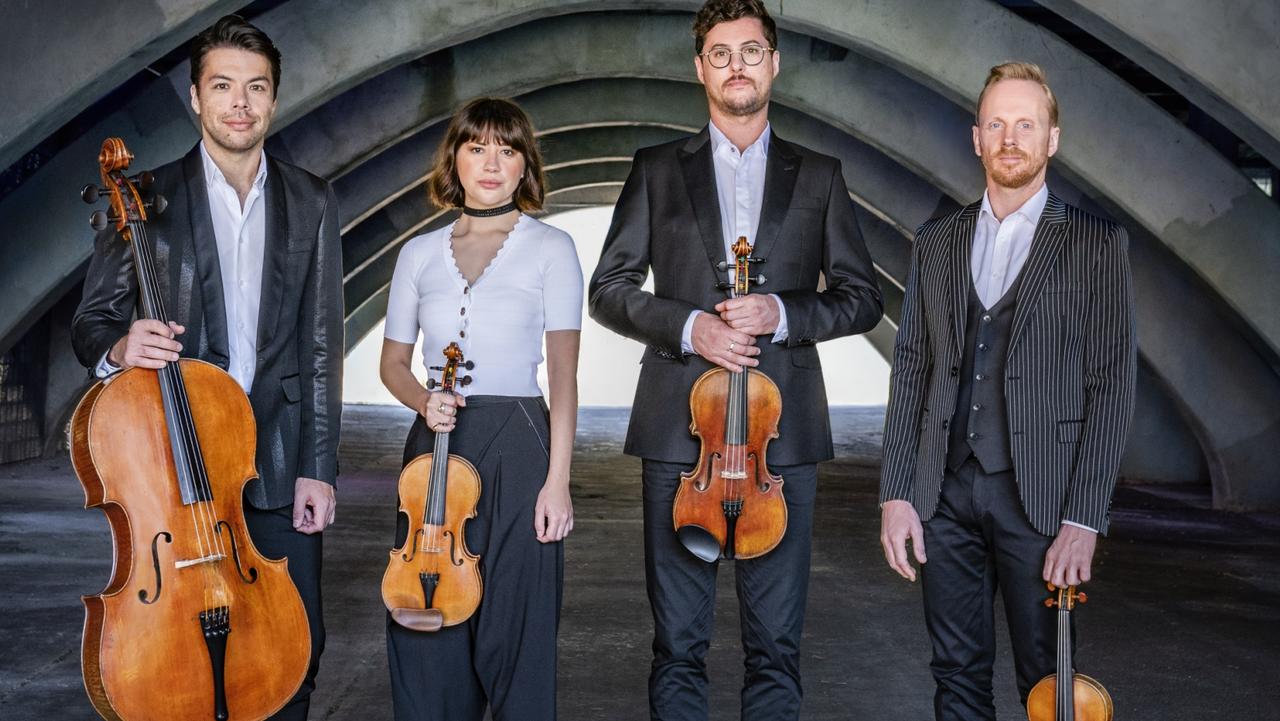Daily Telegraph Sydney/ Steve Moffatt
Ghost of Beethoven at German conductors triumphant debut!
The instruments were the same – the four Guadagninis worth $4 million – but the players were different when the Australian String Quartet joined the Sydney Symphony Orchestra for a performance of John Adams’s Absolute Jest, a work first performed in this country 10 years ago under the SSO’s then chief conductor David Robertson.
That was a night of firsts – Robertson’s opening concert of his first season; the ASQ’s first gig with its short-lived new line-up helmed by Kristian Winther, and the work’s Australian premiere, just two years after Adams wrote it.
This season’s revival is also a first, marking the SSO debut of German conductor Anja Bihlmaier, who at 43 and after 15 years working with various opera companies in her homeland is now recognised as a leading light of her generation. She has recently taken up appointments with Finland’s Lahti Symphony Orchestra and The Hague’s Residentie Orkest, where she is the first woman to be made chief conductor.
For this performance she was joined by the ASQ’s present line-up of Dale Barltrop and Francesca Hiew, violins, Christopher Cartlidge, viola, and cellist Michael Dahlenburg, for an edge-of-the-seat performance of a piece which combines Adams’s highly approachable post-minimalism with an assortment of extracts from Beethoven works.

Australian String Quartet with their present line-up.
Inspired by seeing a performance of Igor Stravinsky’s Pulcinella ballet, which used Pergolesi’s music, some of it falsely attributed, as its model, Adams thought he could do the same using Beethoven scherzos (Italian for „joke’’ hence the work’s title), combining the string quartet and full orchestra. We hear snatches from the Ninth Symphony, the Waldstein piano sonata and two of the late quartets.
It is all cast in Adams’ own distinctive style, minimalist but with a wry sense of humour and all the vivacity of Aaron Copland, especially in the later sections. This is Ludwig with a distinctly Appalachian spring in his step.
Forsaking a baton for expressive hand gestures, Bihlmaier kept a precise control of the orchestra, never letting it swamp the quartet but at the same time giving Adam’s joyful moments full rein. The exhilarating rhythms – the quartet and band sometimes opposing or resisting each other – together with the familiar timpani tattoos of the Ninth and snatches of the Grosse Fuge all make for somewhat breathless listening experience.
As Hiew says, from a playing perspective “you feel like you’re in this cloud of the ghost of Beethoven whizzing past here and there”.
Bihlmaier had shown similar expressive mastery in the opening work, Maurice Ravel’s Le Tombeau de Couperin, with the opening Prelude rising like a perfectly baked souffle. The playfulness of the Forlane, elegance of the Menuet – with some fine work from David Elton’s trumpet, Natalie Wong’s harp and on-form woodwinds – and finally the emphatic beat of the Rigaudon were all coaxed from her players with finesse.
In keeping with the 150th anniversary of his birth, Arnold Schoenberg featured in the final work, not as a composer but as an arranger. His orchestration of Johannes Brahms’ Piano Quartet in G minor Op. 25 captures the symphonic sweep of this 1861 chamber work, written more than a decade before he summoned up the nerve to write his First Symphony.

Sydney Symphony Orchestra in full swing. Picture: Jay Patel
Schoenberg does not hold back, doing away with the piano and scoring it for an orchestra of Brucknerian proportions with five horns, seven other brass players, a large woodwind section and four percussionists including, intriguingly, xylophones and glockenspiel for the famous Rondo alla Zingarese final movement.
Bihlmaier deserved the standing ovation she and the orchestra were given for a performance which highlighted her attention to detail and powerful attack – particularly in the massive opening movement and the carnival-like third movement with its broad melodic theme and festive brass and cymbals, leading into the hectic paprika-tinged finale.